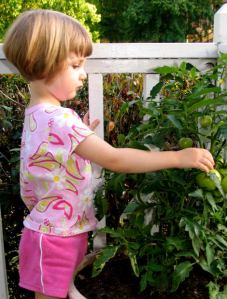This week at the Carrot Ranch Charli Mills is talking about the importance of belonging to and having the support of a community. Charli is talking about the supportive rural community where she lives and describes the way everyone rallies around to help in times of need. No asking is required. Everyone responds and pitches in, like spokes on a well-oiled wheel.
Charli also talks about the importance of the online community, reminding writers that spending time on social media is not a bad thing but an essential part of building community. For many of us introverted writers it is the easiest way of linking up with like-minded people. We gravitate like moths to the flame for our weekly meet-ups around the Carrot Ranch camp fire where Charli stokes the flames to inspire writers and build community.
Charli says that,
“Community is my foundation. All else pushes out from that hub like spokes on a wagon wheel.
Community is the hub; it’s our core. From the community, spokes of opportunity open up to reach the wheel that drives us in the writing market — readers.
An organic community is one that occurs naturally. It’s the kindred-spirits, the shared-values bloggers, the like-minded who gather to write, read and discuss. We might be from varied backgrounds, genres and experiences, but we find common ground in our process, ideas and words.”
People are social creatures, and that sense of belonging to a community, whether large or small, is something most desire. The type of community in which I have spent most of my life is the classroom community, typically an early childhood classroom. As with any other, it is essential that all members of a classroom community have a sense of belonging and feel valued and respected.
Creating a welcoming classroom with those essential ingredients: having a sense of belonging and feeling valued and respected were always high on my list of priorities as a teacher. I tend to mention this frequently and have done so here, here and here, to list just a few.
That these ingredients, along with the other essentials, learning and fun, were thoroughly mixed through everything I did is what characterised my classroom. In my classroom, the community knew that everyone, whether child, parent, support staff, or volunteer, was welcomed and valued for the contribution each made.
Routines and expectations enabled the classroom to function effectively and I tried to add a little fun to lighten up even the dullest of routines expected of us. One routine that will be familiar to many is the daily roll call. The teacher sits or stands at the front of the room calling, in a repetitive monotone and in alphabetical order, the name of each child who responds with a half-hearted, “Present, Miss”. Meanwhile the other children wriggle and fidget waiting for the tedium to finish.
But not in my classroom. Within a matter of days my children knew their position, and probably that of many others, in the roll. While I marked attendance on the roll each day as required, I didn’t call the children’s names. Each child in turn stood and greeted the class warmly, “Good morning, everyone!” The class and I responded by returning the greeting to the child. Everyone was involved all of the time, a community in action.
This five minutes of the day was always fun and filled with smiles and laughter. Some children jumped up with arms outstretched and called out loudly. Some popped up quickly and back down with a quick greeting. Some did a little dance and sang the greeting. Others greeted us with a new language they were learning, or their own first language.
When the children were confident with the order, we would sometimes do it in reverse order. This gave them a little more to think about, but it didn’t take them long to get the hang of it. The children who were usually last on the list enjoyed being first for a change.
When new children joined our class, their names weren’t always immediately added to the roll in their permanent alphabetical location as the rolls were printed fortnightly. This gave us a great opportunity to discuss where in the roll the child’s name would be. Sometimes we had to discuss more than the first letter in family names to determine the correct placement. Oftentimes this would be one of the first things children would insist upon. They wanted everyone to feel welcome and fit in to our warm classroom community.
Adding a little bit of fun to an otherwise tedious task had other benefits:
- Building community,
- Recognising individuals.
- Being engaged,
- An opportunity for activity
- Learning alphabetical order
- Developing memory
We could also have a bit of fun seeing how quickly we could line up in alphabetical order, each time improving on the last. It was a quick way of making sure everyone was there after an activity or break.
It is this theme of community that Charli has used as her flash fiction prompt this week, challenging writers to, in 99 words (no more, no less) write a story about how a community reaches out. I hope you enjoy mine about a classroom community.
Belonging
He waited quietly as yet another teacher heard his life story; a story without hope of redemption or the expectation of a happy ending. With each familiar incriminating snippet, “more schools than years”, “single parent”, “transient”, “neglect and abuse”, he’d instinctively glance towards the teacher. Instead of the usual furrowed brow and flat-mouthed grimace, he found sparkling eyes and a turned-up smile. He peered into the room. When the children saw him looking, they waved him in. He hesitated. Then the teacher said, “Welcome to our class, David. We’ve been waiting to meet you. Come and join us.”

Thank you for reading. I appreciate your feedback. Please share your thoughts.










